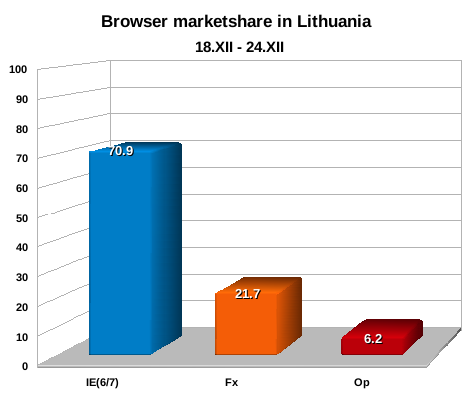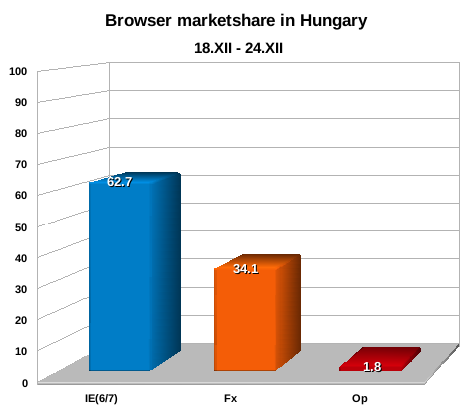The fourth part of this summary focuses on Lithuania. (part 1 – Poland, part 2 – Czech Republic, part 3 – Hungary, part 5 – Ukraine)

Lithuania
Population: 3.4 mln
Internet users: 1.3 mln (36%)
Lithuania is the smallest of the countries from the group. Just 3.4 mln people, but the country has a very long history. Constituted as a kingdom in 13th century, for a few ages in union with Poland (of course the borders were in totally different places back then), later – it was behind the Iron Curtain, together with all other countries I’m writing about in this summary.
 And here we have first differences.
And here we have first differences.
Over 70% of IE’s market share is pretty much if you compare it to the rest of Central/Eastern Europe. Also rather low adoption of Firefox is interesting.
The reason for this is that the first Firefox localized to Lithuanian has been released in June 2006 and it was Firefox 1.5.0.4. For 1,5 year after the 1.0 release, Lithuania had no localized version and currently has approximately 1/3rd less market share than the other countries from the region.
You can also notice significant market share of Opera and I also believe that it’s the result of late entrance of Firefox to the Lithuanian market.
I’ll try to prove that later.
Now, let’s take a look at more detailed chart of browsers versions:






